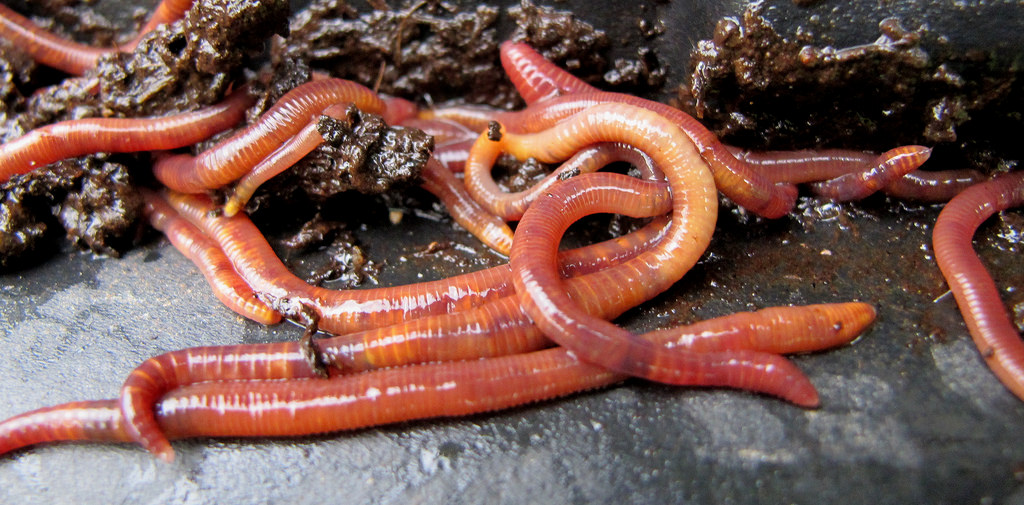Comprehensive Lawn Care Tips from Red Wiggler Express
Red Wigglers: The Unsung Heroes of Organic Waste Recycling
Red wigglers, or Eisenia fetida, serve as important agents in the natural waste reusing process, transforming thrown out materials into useful vermicompost. As the globe progressively looks for services to deal with waste build-up and boost farming performance, recognizing the role of these worms ends up being vital.
What Are Red Wigglers?
The remarkable durability of red wigglers, scientifically referred to as Eisenia fetida, highlights their vital duty in natural waste recycling. These little, reddish-brown earthworms are generally discovered in decaying raw material, such as compost piles and manure loads. Lake Hickory Bait. Unlike various other earthworm types, red wigglers thrive in nutrient-rich environments and are highly reliable at damaging down natural materials, making them necessary for vermicomposting

(Red Wiggler Express)Along with their function in waste reduction, red wigglers add to dirt health by enhancing soil structure and oygenation with their tunneling activities (Lake Hickory Bait). Their visibility in composting systems not only improves decay prices however likewise promotes a lasting approach to throw away management, illustrating their relevance in environmental preservation initiatives
Benefits of Composting With Worms
Composting with worms, particularly red wigglers, uses various advantages that boost both waste administration and soil wellness. First, these worms successfully damage down natural waste, transforming it into nutrient-rich vermicompost that enhances soil. This procedure speeds up decomposition, enabling a quicker recycling of cooking area scraps and various other organic products contrasted to conventional composting techniques.
Additionally, the vermicompost created by red wigglers is including beneficial microbes, which help enhance dirt structure, oygenation, and moisture retention. This boosts the overall health and wellness of plants, advertising energetic development and raised yields in gardens and agricultural setups. Furthermore, using worms in composting lessens the manufacturing of greenhouse gases, such as methane, adding to a more sustainable waste monitoring system.

Just How to Begin Vermicomposting
Establishing a vermicomposting system is a straightforward procedure that can yield considerable benefits for both waste management and soil enrichment. To begin, select an ideal container, such as a plastic container or wooden box, with appropriate ventilation openings to ensure appropriate air flow. The measurements ought to ideally be around 2 feet by 3 feet, permitting enough space for the worms to flourish.
Next, prepare bed linen product, which can be composed of shredded paper, cardboard, or coconut coir. This bed linens needs to be moistened to create an ideal environment for the worms. As soon as the bedding remains in area, present red wigglers (Eisenia fetida) right into the container, commonly around one pound of worms for every single square foot of surface location.
Following the placement of worms, include organic waste, such as fruit and veggie scraps, coffee premises, and crushed eggshells. With these steps, you will properly launch a vermicomposting system that adds to sustainable waste monitoring and improves your soil.
Keeping a Healthy And Balanced Worm Bin
(Red Wiggler Express)Keeping a worm bin thriving needs routine focus and care to make sure the health and wellness of the red wigglers and the effectiveness of the composting procedure. Correct upkeep begins with monitoring the moisture degrees; the container ought to be wet however not waterlogged. An excellent rule of thumb is to maintain an uniformity comparable to a wrung-out sponge.
Oygenation is crucial as well. Delicately blending the bed linen and food scraps every couple of weeks avoids compaction and makes sure that all worms have accessibility to oxygen. Additionally, it is essential to feed the worms properly. A well balanced diet of fruit and vegetable scraps, coffee premises, and smashed eggshells need to be provided in moderation to prevent overfeeding, which can lead to smells and pests.
If the container becomes as well warm or chilly, the worms may end up being stressed. By faithfully taking care of these elements, one can preserve a durable and productive worm container.
Effect on Sustainable Living
The successful upkeep you can try these out of a worm container not only profits the health of red wigglers but additionally adds considerably to sustainable living practices. By reusing organic waste, such as kitchen area scraps and yard particles, red wigglers aid draw away substantial amounts of material from land fills. This reduction in waste not only reduces greenhouse gas discharges but additionally decreases the environmental concern connected with waste administration.
In addition, the castings generated by red wigglers offer as a nutrient-rich organic plant food, boosting soil wellness and advertising plant growth. This all-natural option to chemical fertilizers supports sustainable farming and gardening practices, lowering dependence on artificial inputs that can hurt environments. In addition, worm composting promotes understanding of waste management, urging individuals and neighborhoods to take on more lasting behaviors.

Final Thought
In summary, red wigglers act as vital contributors to natural waste reusing with their effective decomposition of natural products. Their capability to produce nutrient-rich vermicompost boosts dirt wellness and sustains sustainable agricultural techniques. By incorporating vermicomposting right into waste management approaches, people and areas can considerably reduce waste while advertising ecological sustainability. The role of Eisenia fetida in promoting healthy environments highlights the value of these microorganisms in achieving sustainable living and improving dirt fertility.